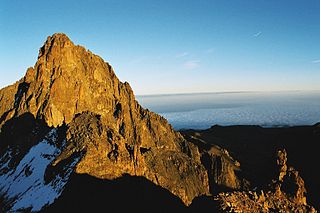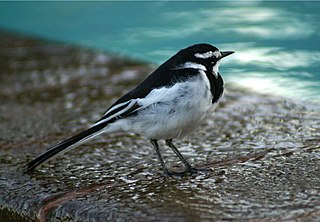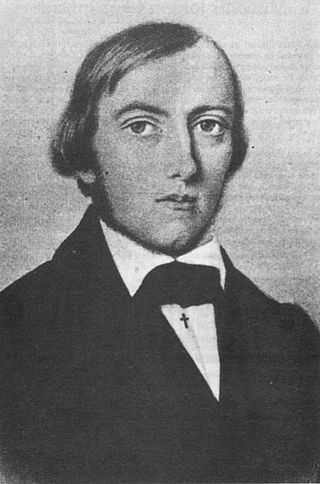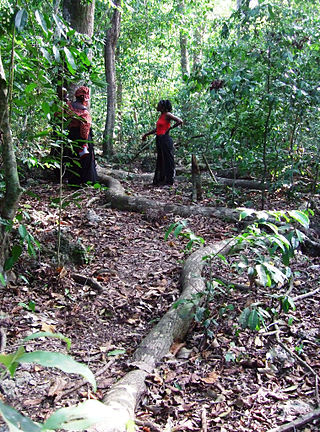
Mount Kenya is an extinct volcano in Kenya and the second-highest peak in Africa, after Kilimanjaro. The highest peaks of the mountain are Batian, Nelion and Point Lenana. Mount Kenya is located in the former Eastern and Central provinces of Kenya; its peak is now the intersection of Meru, Embu, Kirinyaga, Nyeri and Tharaka Nithi counties, about 16.5 kilometres south of the equator, around 150 km (90 mi) north-northeast of the capital Nairobi. Mount Kenya is the source of the name of the Republic of Kenya.

Mijikenda are a group of nine related Bantu ethnic groups inhabiting the coast of Kenya, between the Sabaki and the Umba rivers, in an area stretching from the border with Tanzania in the south to the border near Somalia in the north. Archaeologist Chapuruka Kusimba contends that the Mijikenda formerly resided in coastal cities, but later settled in Kenya's hinterlands to avoid submission to dominant Portuguese forces that were then in control. Historically, these Mijikenda ethnic groups have been called the Nyika or Nika by outsiders. It is a derogatory term meaning "bush people."

Johann Ludwig Krapf was a German missionary in East Africa, as well as an explorer, linguist, and traveler. Krapf played an important role in exploring East Africa with Johannes Rebmann. They were the first Europeans to see Mount Kenya with the help of Akamba who dwelled at its slopes and Kilimanjaro. Ludwig Krapf visited Ukambani, the homeland of the Kamba people, in 1849 and again in 1850. He successfully translated the New Testament to the Kamba language. Krapf also played a key role in exploring the East African coastline, especially in Mombasa.

The Giriama are one of the nine ethnic groups that make up the Mijikenda.
The Church Mission Society (CMS), formerly known as the Church Missionary Society, is a British Anglican mission society working with Christians around the world. Founded in 1799, CMS has attracted over nine thousand men and women to serve as mission partners during its 200-year history. The society has also given its name "CMS" to a number of daughter organisations around the world, including Australia and New Zealand, which have now become independent.

Kilifi County was formed in 2010 as a result of a merger of Kilifi District and Malindi District, Kenya. Its capital is Kilifi and its largest town is Malindi. Kilifi county is one of the five counties that make up the Kenyan Coast. The county has a population of 1,453,787 people following the 2019 census which covers an area of 12,245.90 km2 (4,728.17 sq mi).

Johannes Rebmann, also sometimes anglicised as John Rebman, was a German missionary, linguist, and explorer credited with feats including being the first European, along with his colleague Johann Ludwig Krapf, to enter Africa from the Indian Ocean coast. In addition, he was the first European to find Kilimanjaro. News of Rebmann's discovery was published in the Church Missionary Intelligencer in May 1849, but disregarded as mere fantasy for the next twelve years. The Geographical Society of London held that snow could not possibly occur let alone persist in such latitudes and considered the report to be the hallucination of a malaria-stricken missionary. It was only in 1861 that researchers began their efforts to measure Kilimanjaro. Expeditions to Tanganyika between 1861 and 1865, led by the German Baron Karl Klaus von der Decken, confirmed Rebmann's report. Together with his colleague Johann Ludwig Krapf they were also the first Europeans to visit and report Mount Kenya. Their work there is also thought to have had effects on future African expeditions by Europeans, including the exploits of Sir Richard Burton, John Hanning Speke, and David Livingstone.

St Nicholas Chapel is a private chapel in the grounds of Cholmondeley Castle, Cheshire, England, the ancient seat of the Marquess of Cholmondeley, hereditary Lord Great Chamberlain of England. It is recorded in the National Heritage List for England as a designated Grade I listed building.
Bango is a music style created and made popular on the East African coast by Joseph Ngala. It fuses traditional Portuguese music genres, Arabic influenced taarab music, jazz and music genres of local coastal Bantu languages. It resembles easy listening music styles of Latin America such as bossa nova and music styles of many Indian Ocean islands such as Seychelles and Mauritius. Ngala is a renowned Kenyan bango musician who comes from Freretown, Mombasa, and also the founder of the genre. He performed in the past with famous groups such as the Hodi Boys and was also the founder and band leader of the 1960s and 1970s group Bahari Boys. In the band, he was the main composer and inspiration. Mzee Ngala's song "Bango" is the originator of the name bango. The resilience of the name, bango, is testament to the genre created by Ngala.
Rabai, also called Rabai Mpya (New Rabai), is a historic location and Sub-County in Kilifi County, Kenya about 12 miles northwest of the city of Mombasa. It is the first place in Kenya where missionaries of the Church Missionary Society (CMS) established a Christian mission.
Karl Wilhelm Isenberg, spelt or known by names Carl Wilhelm Isenberg or Charles William Isenberg or C. W. Isenberg or Carl W. Isenberg or Charles Isenberg, was a German Church Missionary Society missionary and linguist to East Africa and Western India.
The Bible, or portions of it, have been translated into over 1,000 languages of Africa.

Johann Jakob Erhardt, or John James Erhardt, was a German missionary and explorer who worked in East Africa and India. Although he remained on or near the coast of East Africa, he contributed to European knowledge of the interior through gathering descriptions from local people who had traveled there. His map of the region stimulated dispatch of the expedition of Burton and Speke.
Lake Uniamési or the Uniamesi Sea was the name given by missionaries in the 1840s and 1850s to a huge lake or inland sea they supposed to lie within a region of Central East Africa with the same name.

A kaya is a sacred site of the Mijikenda people in the former Coast Province of Kenya. Often located within sacred forests, a kaya is considered to be an intrinsic source of ritual power and the origin of cultural identity; it is also a place of prayer for members of the Mijikenda ethnic group. The settlement, ritual centre, and fortified enclosure associated with the forest are also part of the kaya. This ecozone is thought to be the only living example of what the ecosystem was like during the early settlement period of the East African coast. In the present day, the kaya is also referred to as a traditional organizational unit of the Mijikenda. Eleven of the approximately 60 separate makaya have been grouped together and inscribed as the Sacred Mijikenda Kaya Forests, a UNESCO World Heritage Site.
Kaya Mudzi Muvya is a coastal lowland dry deciduous forest in Kilifi County of southern Kenya. It became a World Heritage Site in 2008. A large portion of the forest is an area protected by the Kenya Forest Service under The Forests Act of 2005, and as a national monument under the Antiquities and Monuments Act Cap 215. The forest is sacred to the local Mijikenda people, known as the Rabai. The forest has suffered deprevation over the past hundred years.

Chief Kivoi Mwendwa was a Kamba long-distance trader who lived in the present day Kitui. Kivoi is most famous for guiding missionaries into the interior of the present day Kenya after he guided the German missionaries Johann Ludwig Krapf and Johannes Rebmann of the Anglican Church Missionary Society (CMS). During the trips, both Rebmann and Krapf came within visual distance of Mount Kenya.
All Saints' Cathedral, Nairobi is a Cathedral of the Anglican Church of Kenya (ACK).

Germany–Tanzania relations are the bilateral relations between Germany and Tanzania. From 1885 to 1918, Tanzania was a German colony as part of German East Africa. In the 21st century, relations are primarily characterized by the joint development cooperation.











